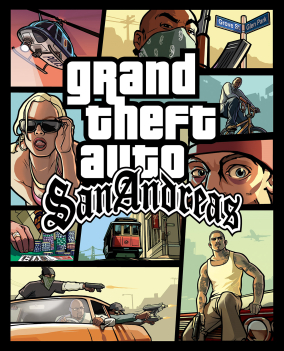
Grand Theft Auto: San Andreas is a 2004 action-adventure game developed by Rockstar North and published by Rockstar Games. It is the seventh title in the Grand Theft Auto series, following 2002's Grand Theft Auto: Vice City. Set within the fictional state of San Andreas, the game follows Carl "CJ" Johnson, who returns home after his mother's murder and finds his old gang has lost much of their territory. Over the course of the game, he attempts to re-establish the gang, clashes with corrupt authorities and powerful criminals, and gradually unravels the truth behind his mother's murder.

Dark Angel: Vampire Apocalypse is an action role-playing game (ARPG) developed and published by Metro3D for the PlayStation 2 (PS2) home game console.

Lego Star Wars: The Video Game is a 2005 Lego-themed action-adventure video game based on the Lego Star Wars line of construction toys, and the first installment in the Lego video game franchise developed by Traveller's Tales, which would develop all future Lego titles from that point on. It was first released on 29 March 2005, and is a video game adaptation of the Star Wars prequel trilogy: The Phantom Menace, Attack of the Clones and Revenge of the Sith, with a bonus level from A New Hope.

Midnight Club: Street Racing is a 2000 racing video game developed by Angel Studios and published by Rockstar Games. The game focuses on competitive street racing and the import scene. The game was released for the PlayStation 2 and Game Boy Advance platforms, the former being a launch title for the platform. It is the first game in Midnight Club franchise, followed by Midnight Club II.

The Ring: Terror's Realm is a survival horror video game developed and published by Asmik Ace Entertainment in Japan and published by Infogrames North America in North America. It was released for Dreamcast on February 24, 2000 in Japan and September 26 in North America. It is based on the Ring series of novels by Japanese author Koji Suzuki, which also inspired the Japanese film Ring (1998) and its American remake, The Ring (2002).
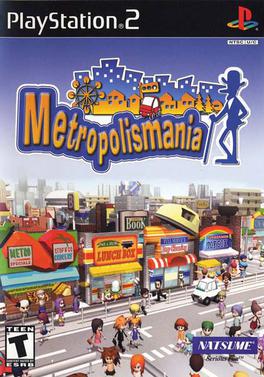
Metropolismania is a PlayStation 2-only city-building game developed by Indi. The object of the game is to interact with NPCs in order to populate various towns. A sequel was announced by Natsume Inc., titled Metropolismania 2. The title was released on August 28, 2007 in North America and in Japan on July 13, 2006 by D3 Publisher. Another sequel, Metropolismania 3, was released for the PlayStation Portable by D3 Publisher but in Japan only. Several titles under the name "Machi-Ing maker" have also been published for the Nintendo DS and the PlayStation 3.

Tokyo Xtreme Racer 2, known as Shutokō Battle 2 in Japan and Tokyo Highway Challenge 2 in Europe, is the sequel to Tokyo Xtreme Racer, which is also on the Sega Dreamcast. Tokyo Xtreme Racer 2 has been enhanced with better sound quality and graphics over its predecessor. The game managed to produce two more sequels. It is the last game in the series that was produced for Sega Dreamcast, though some of the game's mechanics were implemented into Daytona USA 2001.

Star Trek Starfleet Command II: Empires at War is the sequel to Star Trek: Starfleet Command and the second in the series of real-time space combat games, developed by Taldren, Inc. and published by Interplay. A stand-alone expansion pack was released in June 2001 titled Starfleet Command: Orion Pirates.

Evil Dead: Hail to the King is a survival horror video game developed by Heavy Iron Studios and published by THQ. Released for the PlayStation, Dreamcast, and Microsoft Windows, the game acts as a sequel to the 1992 film Army of Darkness. This was the second video game released to be based on the Evil Dead film franchise, following the 1984 title The Evil Dead, and was also the first video game to be developed by Heavy Iron Studios.

Chicken Run is a platform-stealth based 3-D platform video game based on the 2000 film of the same name. The game is a loose parody of the famous film The Great Escape. The Game Boy Color version is a 2D isometric puzzle-solving game. The game's plot is about chickens escaping from a farm from their evil owners and fighting for freedom.
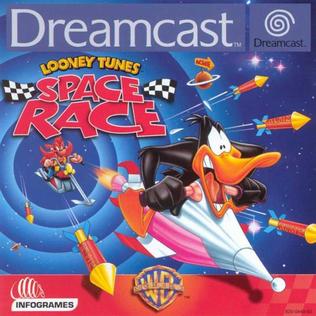
Looney Tunes: Space Race is a 2000 kart-racing video game published by Infogrames for the Dreamcast and developed through Infogrames' own Melbourne House studio. A version of Nintendo 64 was developed, but it was never released. It was ported to PlayStation 2 in 2002 with a new tournament mode and different soundtrack.
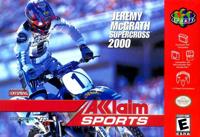
Jeremy McGrath Supercross 2000 is a motocross racing video game developed by Acclaim Studios Salt Lake City and published by Acclaim Entertainment under their Acclaim Sports label for Nintendo 64, Game Boy Color, PlayStation and Dreamcast. It features eight stadium tracks, eight outdoor tracks, and an option for players to create their own custom tracks. In addition to having a racing game mode, players could perform dirt bike tricks in a stunt mode.

MLB Slugfest 2003 is a baseball video game published by Midway Sports in 2002. It is the first game in the MLB Slugfest series. Alex Rodriguez from the Texas Rangers is the cover athlete.
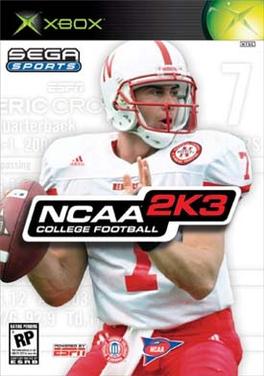
NCAA College Football 2K3 is a 2002 American football video game published by Sega. The cover athlete is former Nebraska Cornhuskers quarterback Eric Crouch. It is the second college football game by Visual Concepts and Avalanche Software.
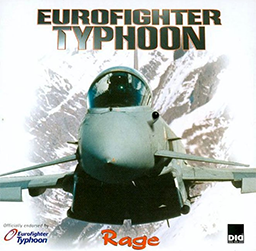
Eurofighter Typhoon is a combat flight simulator published by Rage Software in 2001. The game models the jet fighter Eurofighter Typhoon. Digital Image Design was in process of developing the game as successor to F-22 Total Air War when the company was bought by Rage Software. An extended version of the game with an additional campaign, Eurofighter Typhoon: Operation Icebreaker, was released in 2002.

Deep Fighter is a submarine simulator video game developed by Criterion Games and published by Ubi Soft. It was released for Dreamcast and Windows in 2000. The game has the player dog-fight enemies underwater whilst completing missions. The game contains cutscenes featuring actors, including David Walliams.

Sega Extreme Sports is a sports game developed by Norwegian video game development company Innerloop Studios. It was released under a variety of names and published by many companies.

Virtua Athlete 2K, known as Virtua Athlete 2000 in North America, is a Sega Dreamcast track and field sports game developed by Hitmaker. The arcade game Virtua Athletics, also known in Japan as Virtua Athlete, is based on the Dreamcast version. Virtua Athlete 2K supports up to four local players simultaneously as to compete for the top score through all seven of its events. Virtua Athlete was released on the PlayStation 2 in Japan as part of the DecAthlete Collection with DecAthlete and Winter Heat. The collection is the 15th volume of the Sega Ages 2500 series.

Championship Surfer is an extreme sports video game developed by Krome Studios, published by Mattel Interactive in North American and GAME Studios in Europe, and released for Microsoft Windows, PlayStation and Dreamcast in 2000.

Rock 'Em Sock 'Em Robots Arena is a video game developed by Paradox and published by Mattel Interactive for the PlayStation in 2000.




















